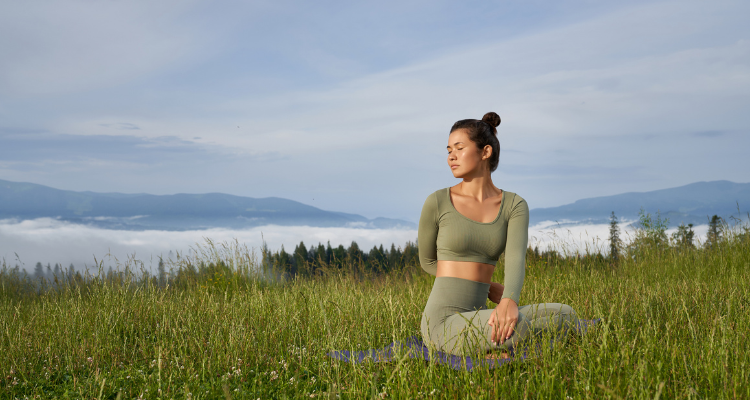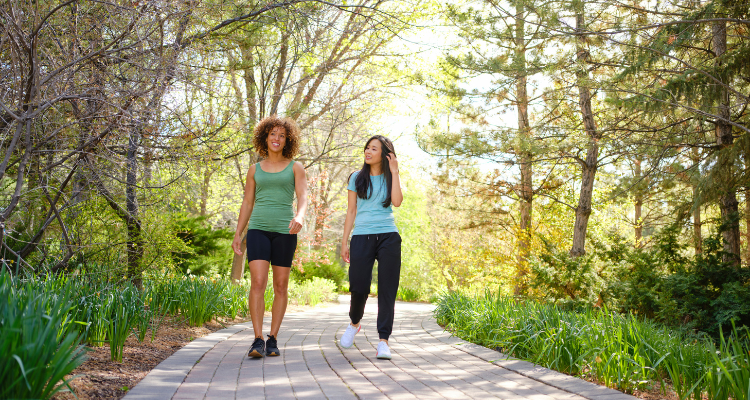
Attention, gym-goers. “Off” days have shifted into “Active Rest” days. Are you keeping up?
Fitness enthusiasts can be tempted to work out daily, but research shows better results for those who schedule in active rest days.[1] Laying around doing nothing the day after an intense workout sounds like a good idea, but the science shows it’s actually better to promote muscle recovery with some gentle yoga or hiking.
Striking this balance can be challenging for those on both ends of the exercise spectrum. Bodybuilders might want to power lift almost every day, then do absolutely nothing on their occasional off days. More moderate intensity fitness enthusiasts might not think they need a rest day at all, and push themselves to keep up with their workout routine every single day.
What are Active Rest Days and Why are They Important?
Active rest days give the body time to integrate the hard work it's done and repair the microscopic muscle tears associated with exercising.[2] Engaging in some light cardio keeps the circulation flowing to assist in these rebuilding processes (by flushing nutrients like oxygen and amino acids to the tissues in need), and can thus help reduce delayed onset muscle soreness (DOMS).
Many activities fall into the category of active rest days, and they can be customized for each person. If you love being outdoors in nature, then go for a sight-seeing hike in the woods. Love water? Go for a swim. Maybe you use your active rest days for the more social exercise opportunities, like a stretching Pilates class or mall walk with a friend.
Pushing the body too hard and skipping rest days overburdens your system with workout by-products (like hydrogen ions and lactic acid) and can lead to burnout and more frequent injuries.[3] The low-intensity movements associated with active rest days, such as swimming or tai chi, promote both relaxation and flexibility.

Do You Need Active Rest Days? How Many?
In reality, everyone needs rest days. The type of workouts you do, their level of intensity, your health, and your fitness goals all matter when determining how to best pencil in your rest days.
Generally, the more intense your workouts, the more rest days you need to schedule. Those routinely doing High Intensity Interval Training (HIIT) might benefit from 3-4 active rest days weekly.[4] Because they are accustomed to such rigorous exercise, and likely have specific fitness goals, active rest days make more sense than taking traditional “off” days.
Those engaging in moderate workouts like vinyasa yoga or jogging might not need so many rest days. They are primed to optimize fitness outcomes by simply shifting into lighter versions of their usual exercises on their 1-2 active rest days per week, like yin yoga or walking.
Your body will tell you when it needs more rest. If you’re feeling drained every day, fatigued upon waking each morning, and suffering frequent injuries that don’t heal efficiently, it’s time to schedule in more rest days.
Forcing your way through 2-3 straight days of intense workouts in a row often leads to mental exhaustion and lower immune function. Your workout plan is supposed to lead to better health and wellness, right? If that’s not the direction you’re moving in, it’s time to reassess the exercise routine.
It’s normal to be tired after a hard workout, and it’s even normal to feel some soreness afterward, too. Active rest days give your body and mind the time and space to integrate your hard work, eliminating toxic by-products and rebuilding muscle tissue. Scheduling in active rest days means that you’re more likely to head into the next day feeling revitalized and ready to tackle your workout.
Ten Movements to Try on Active Rest Days
Finding the right activities for your active rest days takes some practice, but don’t overthink it. Try some of these low-to-moderate intensity movements to keep your circulation flowing and your body in repair mode on your rest days.
- Walking & Hiking. You’re moving your entire body and allowing your mind to relax and go with the flow. Whether you’re power walking to an intense playlist, mall walking in inclement weather, or hiking a new trail at the forest preserve, good old fashioned walking is an excellent choice for an active rest day.
- Yoga. Because it’s offered in a wide variety of formats, from heated vinyasa to relaxing yin yoga, you can find the right level of intensity for your active rest days. Yoga engages the whole body, including muscle groups that you might not be intentionally working out in your usual exercise routine, which prevents plateauing.
- Swimming. Another way to stimulate all of the muscle groups and promote circulation is to go for a swim. It takes the pressure off of joints and allows for intricate stretching that doesn’t happen on land.
- Biking. This activity can be done indoors (on a stationary) or outdoors, making it a versatile and customizable option for your active rest days. Just make sure you keep it to a low enough intensity to hold a conversation.
- Foam Rolling & Massage. Focus on manually stimulating the muscle tissue from the outside in. Let your body weight create moderate pressure on any sore points and hold for 1-2 minutes until you feel the myofascial release, or lay back while a massage therapist increases circulation and relieves muscle soreness for you.
- Dancing. Turn up the music and feel the movements course through your entire body. Dancing activates different muscle groups and integrates some light cardio, all while having fun and letting loose.
- Rebounding. As a low-impact cardiovascular exercise, rebounding makes a fun and easy activity for active rest days. Jump on a trampoline, prance with alternating high-knee bouncing, or go for some jump squats for a more challenging rebounding experience.
- Tai qi or Qi Gong. Try a Tai Qi class for a full-body, low-impact workout, or learn some specific Qi Gong movements to cultivate energy and bring focus to certain parts of the body that need your reparative attention.
- Jogging or Roller-blading. Keep it light and low impact, and you can really get moving on your active rest days. If you’re finding that you can’t hold a conversation though, that’s the sign that it’s too intense for your active rest day.
- Gardening. Yes, even the CDC says gardening counts as exercise. With the flush of fresh air, bending, twisting, and squatting, you can consider gardening a form of full-body exercise. Plus, it leads to healthy eating.
Takeaway
Whichever activities you chose for your active rest days, make sure the end result is the same. You should feel rested, relaxed, and rejuvenated before your next big workout day. In giving yourself time to recover, you’re giving yourself a boost of mental and physical energy for the next day.
Active rest days help prevent physical injury and mental burnout alike. By penciling in active rest days, and peppering in fun and engaging activities, you keep your attitude as on point as your physique. That’s right–rest days actually help you meet and exceed your fitness goals.

[1] St. Pierre, I. A., Buchanan, C. A., & Dalleck, L. C. (March 2018). Active vs. passive recovery and exercise performance: Which strategy is best? ACE Certified, pp 1-4.
[2] Corder, K. P., Potteiger, J. A., Nau, K. L., Figoni, S. E., & Hershberger, S. L. (2000). Effects of active and passive recovery conditions on blood lactate, rating of perceived exertion, and performance during resistance exercise. The Journal of Strength & Conditioning Research, 14(2), 151-156.
[3] Monedero, J., & Donne, B. (2000). Effect of recovery interventions on lactate removal and subsequent performance. International Journal of Sports Medicine, 21(08), 593-597. https://doi.org/10.1055/s-2000-8488.
[4] Metcalfe, R.S., Babraj, J.A., Fawkner, S.G. et al. Towards the minimal amount of exercise for improving metabolic health: beneficial effects of reduced-exertion high-intensity interval training. Eur J Appl Physiol 112, 2767–2775 (2012). https://doi.org/10.1007/s00421-011-2254-z


















